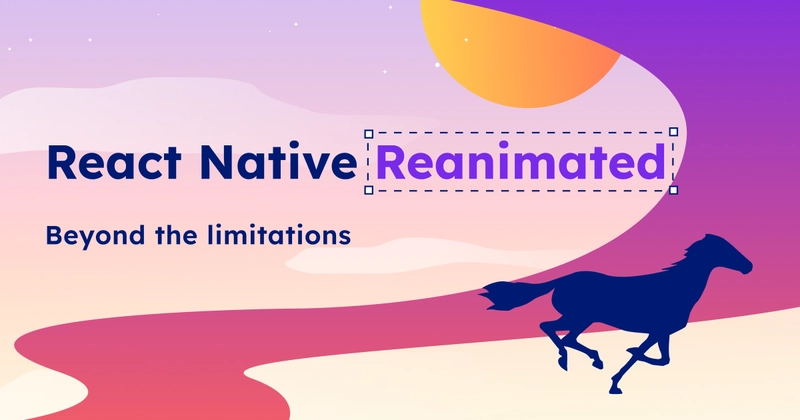React Native Reanimated 3: The Ultimate Guide to High-Performance Animations in 2025 

React Native has revolutionized mobile app development by enabling cross-platform apps with a single codebase. However, when it comes to smooth, performant animations, developers often face challenges due to JavaScript’s threading limitations. That’s where React Native Reanimated comes in—a game-changing library for building buttery-smooth, 60 FPS animations directly on the native thread.
In this comprehensive guide, we’ll explore React Native Reanimated 3, its core features, benefits, and how to leverage it for high-performance animations in your apps.
 What is React Native Reanimated?
What is React Native Reanimated?
React Native Reanimated is a powerful animation library that allows developers to offload animation logic to the native UI thread, bypassing the JavaScript bridge. This results in:
- Smoother animations (60 FPS even with complex transitions).
- Declarative API for easier animation management.
-
Gesture integration with
react-native-gesture-handler.
With Reanimated 3 (latest version in 2025), the library has introduced new hooks, improved performance, and better debugging tools.
 Why Use Reanimated Instead of Default Animated API?
Why Use Reanimated Instead of Default Animated API?
| Feature | React Native Animated | React Native Reanimated |
|---|---|---|
| Thread | Runs on JS thread (can cause jank) | Runs on Native UI thread (smooth) |
| Performance | Limited by JS bridge | 60 FPS, no bridge bottleneck |
| Declarative Syntax | No | Yes (easier to read & maintain) |
| Gesture Support | Basic | Deep integration with react-native-gesture-handler
|
| Debugging | Limited | Advanced dev tools & logs |

 Key Features of React Native Reanimated 3
Key Features of React Native Reanimated 3
1. Worklets: Run JavaScript on the Native Thread 
Worklets allow JavaScript code to execute directly on the native thread, eliminating bridge delays.
javascript
Copy
const opacity = useSharedValue(0);
const fadeIn = () => {
'worklet'; // Marks this function as a worklet
opacity.value = withTiming(1, { duration: 300 });
};
2. Declarative Animations with useAnimatedStyle 
Instead of manually updating styles, use useAnimatedStyle to bind animations to React Native components.
javascript
Copy
const animatedStyle = useAnimatedStyle(() => ({
opacity: opacity.value,
transform: [{ scale: scale.value }],
}));
return ;
3. Smooth Gesture Animations with react-native-gesture-handler 
Reanimated integrates seamlessly with gestures, enabling draggable elements, swipe interactions, and pinch-to-zoom.
javascript
Copy
const panGesture = Gesture.Pan()
.onUpdate((e) => {
translateX.value = e.translationX;
translateY.value = e.translationY;
});
4. Physics-Based Animations (withSpring, withDecay) 
Reanimated supports realistic motion with spring and decay animations.
javascript
Copy
scale.value = withSpring(isPressed ? 0.8 : 1, {
damping: 10,
stiffness: 100,
});
5. Shared Element Transitions (New in Reanimated 3) 
Now you can create seamless transitions between screens, similar to Instagram or Pinterest.
javascript
Copy
 Performance Benchmarks: Reanimated vs. Default Animated
Performance Benchmarks: Reanimated vs. Default Animated
| Scenario | Default Animated | Reanimated |
|---|---|---|
| 60 FPS Animation |  Drops frames Drops frames |
 Smooth Smooth |
| Complex Gestures | Laggy | Buttery smooth |
| CPU Usage | High (JS thread) | Optimized (Native thread) |
| Memory Impact | Moderate | Low |

 How to Install React Native Reanimated 3
How to Install React Native Reanimated 3
Step 1: Install the Package
bash
Copy
yarn add react-native-reanimated
# or
npm install react-native-reanimated
Step 2: Configure Babel (for Worklets)
Add to babel.config.js:
javascript
Copy
plugins: ['react-native-reanimated/plugin'],
Step 3: Enable Hermes (Recommended for Best Performance)
javascript
Copy
// android/app/build.gradle
project.ext.react = [
enableHermes: true,
]
 Advanced Use Cases & Real-World Examples
Advanced Use Cases & Real-World Examples
1. TikTok-Like Swipeable Feed
javascript
Copy
const onSwipe = Gesture.Pan()
.onEnd((e) => {
if (e.velocityX > 1000) {
// Swipe right animation
x.value = withSpring(screenWidth);
}
});
2. Animated Bottom Sheet
javascript
Copy
const translateY = useSharedValue(screenHeight);
const animatedSheetStyle = useAnimatedStyle(() => ({
transform: [{ translateY: translateY.value }],
}));
3. Instagram Stories Progress Bar
javascript
Copy
const progress = useSharedValue(0);
useEffect(() => {
progress.value = withTiming(1, { duration: 5000 });
}, []);
 Debugging & DevTools
Debugging & DevTools
Reanimated 3 comes with improved debugging:
-
react-native-reanimated/devtoolsfor inspecting animations. -
console.loginside worklets (no more silent errors). - Performance monitoring with
useAnimatedReaction.
 Conclusion: Should You Use Reanimated in 2025?
Conclusion: Should You Use Reanimated in 2025?

- You need 60 FPS animations.
- Your app has complex gestures (swipe, drag, pinch).
- You want declarative, maintainable animation code.

- You only need simple animations (fade, slide).
- You’re working on a legacy project with no performance issues.








 Further Reading
Further Reading


